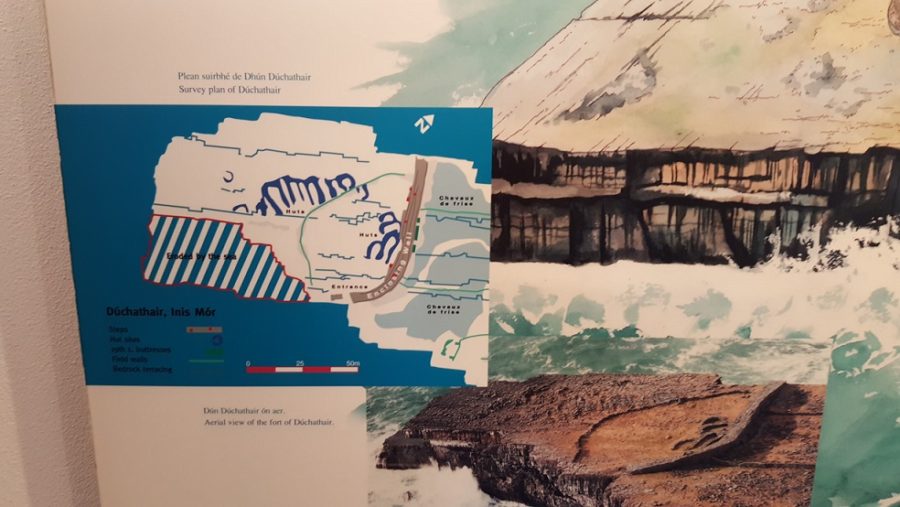
We did some exploring around Na hÁrainneacha (the Aran Islands) for a few days this month, carrying out research on a number of the prehistoric fortresses and hoping to get a few photos that we could work into future covers for the Fionn mac Cumhaill series.
Most people tend to associate the islands with the more famous Dún Aoghonsa and although that fortress is undeniably spectacular, our favourite actually turned out to be the lesser known Dún Dúchathair. Incorrectly translated into English as ‘The Black Fort’ (the name is more correctly translated as the “Fort of the Black Stone”).

This formidable site sits up on an isolated cliff promontory on the south-eastern side of An Árainn Mhór (Inishmore), the largest of the three islands. As prehistoric buildings go, this one is old, so old there’s very little actually known about it (although it’s believed to be contemporary with the equally dramatic Dún Aoghonsa which was built around 1110 BC). On a bright day, seeing the edifice silhouetted against the startlingly vivid horizon you can also understand the origin of its Irish name.
Although An Árainn Mhór is only nine kilometres long, the Black Fort is surprisingly difficult to access, set as it is on the far side of network of rocky channels that have to be traversed with some caution. Crossing the flat – but very pitted and uneven rocky surface – is a bit like walking across a benign minefield. It’s all very possible but you’re obliged to keep your eyes on the ground at all times unless you stop moving. If you don’t, it’s inevitable that you’ll become a cropper. That was one thing that really struck me about the entire island. Because the terrain’s so rough, unless you’re walking on a modern road or flat, you always have to walk with your head bowed.


The most immediate thing that comes to mind as you approach Dún Dúchathair is that it was obviously built with a defensive purpose in mind. Even today, it’s a site that’s not easily approached due to the reasons outlined above. Add to that, the cliffs on three sides, the chevaux de frises (dense series of rock obstructions placed in a vertical position that make the difficult surface even harder to traverse) and a six-metre high wall spread across the edge of the promontory, and you’re seriously left wondering how successful a land-based assault could possibly have been. Even with dramatically superior numbers, any attacking force would also have been exposed to sling-shot, javelins and spears and suffered losses that were almost certainly unsustainable.

Ironically, despite its immense defences, Dún Dúchathair turned out to be most at risk from its own defensive positioning. At some stage in the distant past, a large section of the flat promontory making up the interior of the fort, fell into the sea, its base eroded over centuries by the crashing power of the waves below.




